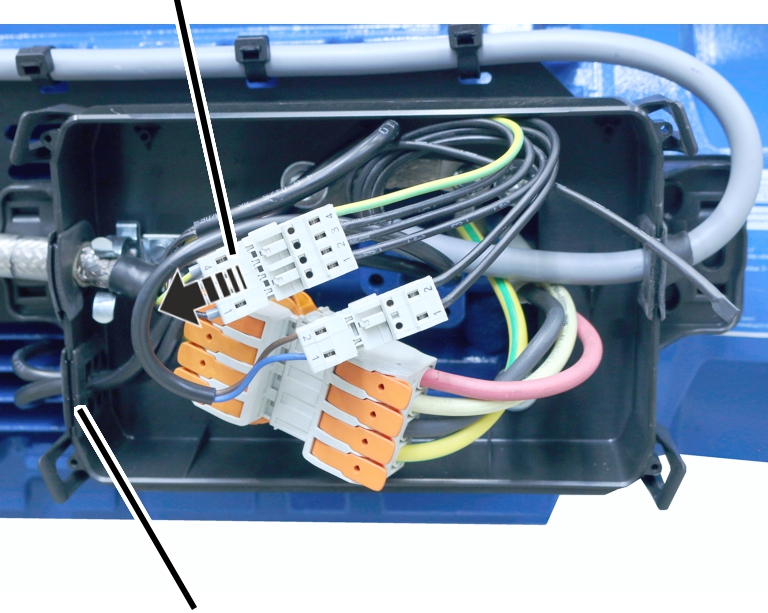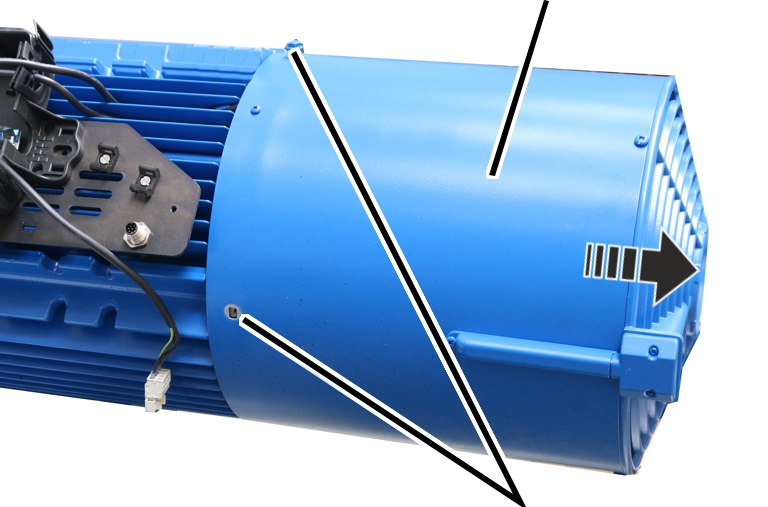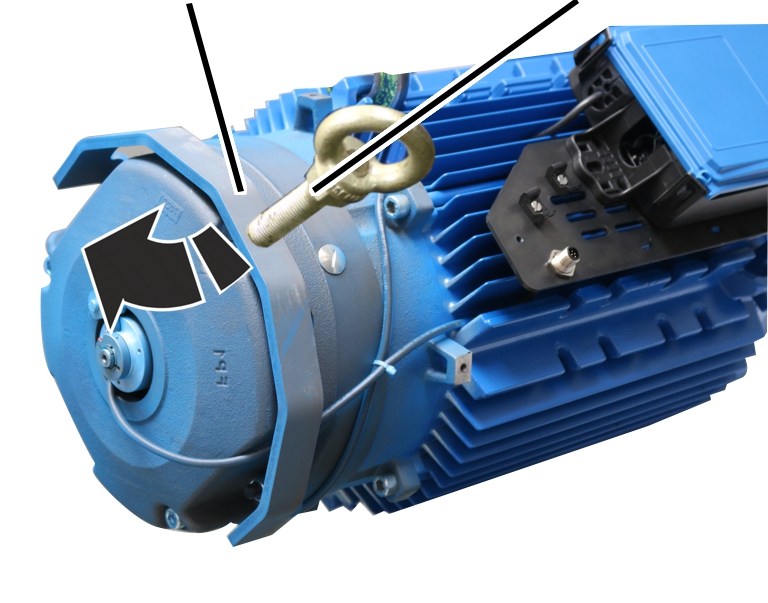In the event of a power failure, a defective hoist motor or a
defective brake coil, the load can be lowered by hand. To do so, the brake is
released manually using the brake release lever.
Lowering a load by hand is an emergency measure.
|

|
Danger due to uncontrolled sagging of the
load!
The load accelerates quickly if the brake is
released too far. This could cause the load to sag in an uncontrolled
fashion.
Warn persons around the crane about the emergency
lowering procedure. Activate the brake release lever very carefully.
|
Securing the
operating range
 Cordon off the operating range
around the crane sufficiently.
Cordon off the operating range
around the crane sufficiently.
 Inform persons around the crane
about the emergency lowering procedure.
Inform persons around the crane
about the emergency lowering procedure.
Removing the fan
cover
|

|
Danger from electric shock!
Even after the crane has been switched off,
life-threatening high voltages are present in the frequency converter and
hoist drive.
Before working on the hoist drive, detach the
connection cable of the hoist drive. |
|

|
Do not allow the fan cover to hang from the
connection cable!
If the fan cover with auxiliary fan hangs on the
connection cable, it can break, since the fan cover with auxiliary fan is
very heavy.
Detach the plug-in connection in the connector
housing and pull out the connection cable so that you can lay the fan
cover aside during the assembly. |
|
Auxiliary fan connector |
|
|

|
|
Cable
bushing |
|
 Disconnect the auxiliary fan
connector.
Disconnect the auxiliary fan
connector.
 Pull the connection cable of the
auxiliary fan out of the cable bushing.
Pull the connection cable of the
auxiliary fan out of the cable bushing.
The cable bushing is slotted in from above. This makes it easy
to pull the connection cable out.
|
|
Fan
cover |
|

|
|
|
Rib
screws M6x10 |
 Unscrew the rib screws M6x10 of
the fan cover.
Unscrew the rib screws M6x10 of
the fan cover.
 Pull the fan cover off to the
rear.
Pull the fan cover off to the
rear.
Lowering a
load
|
Brake
release lever |
Threaded
rod |
|

|
 Screw a threaded rod M16 into
the brake release lever.
Screw a threaded rod M16 into
the brake release lever.
 Carefully and slowly tilt the
brake release lever backwards with the threaded rod.
Carefully and slowly tilt the
brake release lever backwards with the threaded rod.
● The brake
is released, the load sinks downwards.
 Tilt the brake release lever
back if the load is losing height too quickly.
Tilt the brake release lever
back if the load is losing height too quickly.
Replacing the
brake
The brake lining is subject to a heavy load during emergency
lowering and can quickly overheat. Therefore, the brake rotor must be replaced
afterwards. See Replacing the brake rotor on
the hoist drive.







